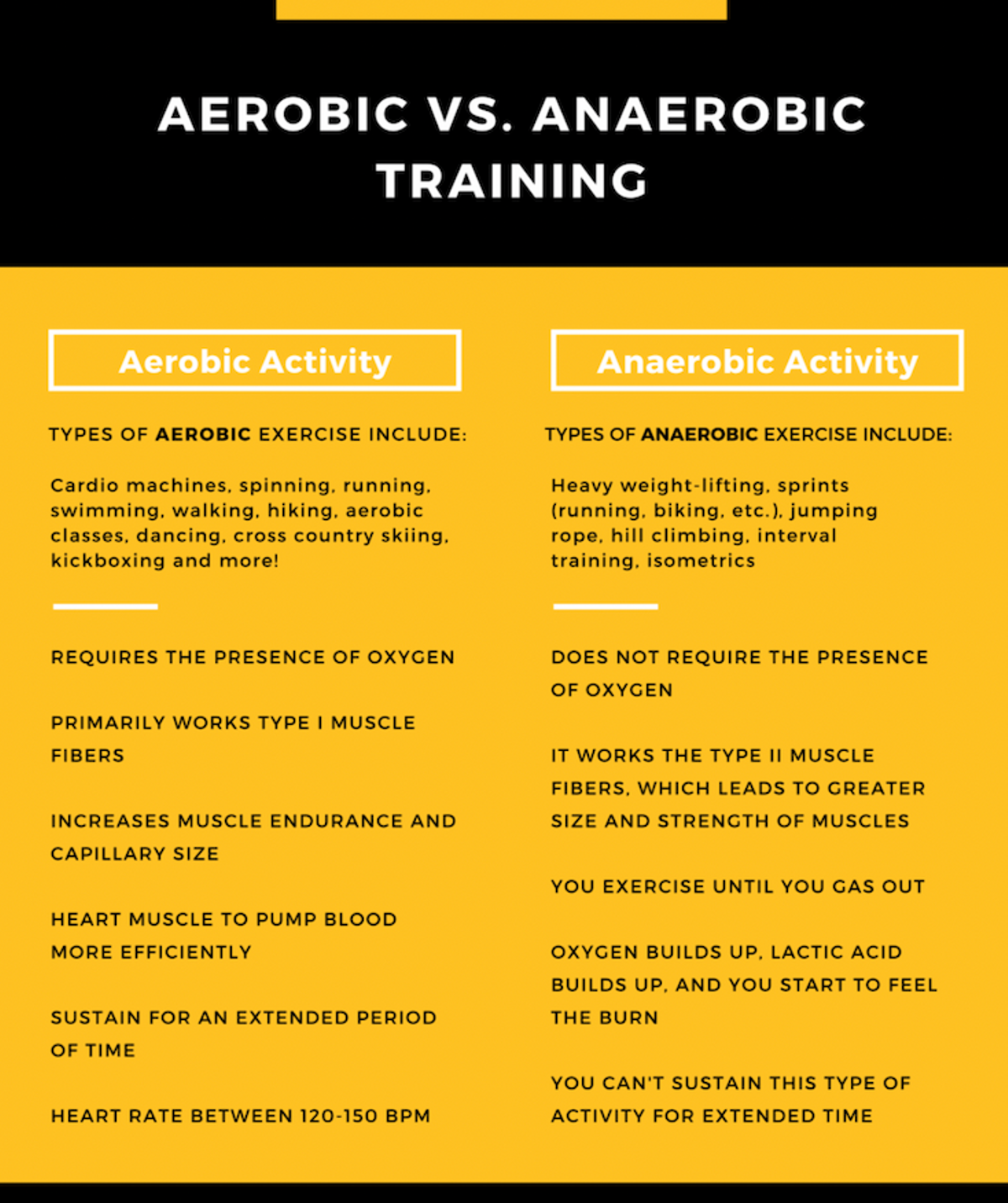
Should your client ditch cardio?
No, not entirely, but you should definitely put weight lifting at the forefront of your clients’ workout program. When referring to cardio we immediately assume running i.e treadmill, elliptical, etc. I am here to explain why aerobic exercise is good, but why weight lifting is better. Weight lifting encompasses more anaerobic type metabolic reactions. Before proceeding let’s define aerobic vs anaerobic with a detailed infographic from the International Sports Sciences Association.

This chart saves ample time that would be needed to dive into both concepts. It breaks it down nicely.
Cardio (aerobic) exercise always wins in terms of calorie-burning effect. You will actually burn more calories during a 30 min cardio session than you will in a 30 min weight lifting workout. Although there’s a catch! Weight lifting workouts (anaerobic) will help you build strength and muscle. With muscle and strength direct correlation, you will find that the more muscle you have the more fat you burn. In turn, you will burn more fat as long as you continue to build muscle. This allows you to burn more calories over the entire 24 hour period. While cardio workouts induce calorie-burning effects only during the actual workout.
Things to make a point to your clients:
Weights will not make you big and bulky.
More cardio is not always better, but if you are going to prescribe it to your client then prescribe it for after their strength workout. Performing aerobic workouts after anaerobic workouts are much better for fat burning. It induces better fat oxidation and utilization as a result of burning through glycogen during the anaerobic workout.
Squat, lunging, rowing, pushing and hip hinge movements should be performed by all clients no matter their individual goals – everyone wants to build muscle and burn fat in some way, shape, or form.
Helping your clients understand, in a way they relate to, that weight lifting helps them lose weight is important in keeping them around.



